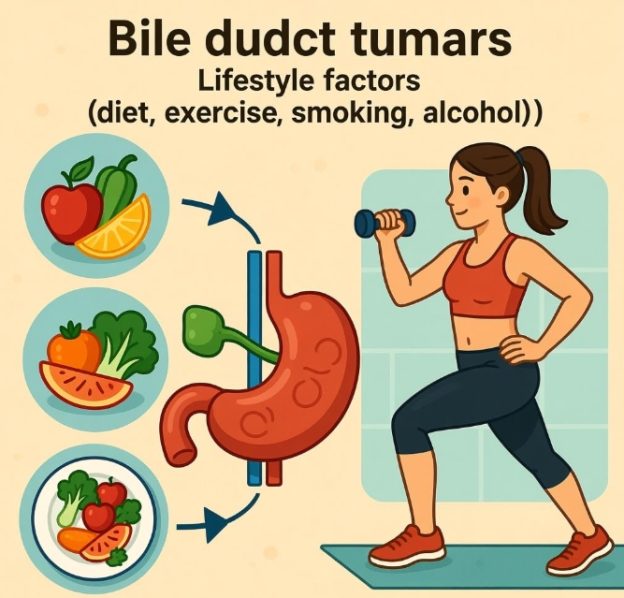Biliary tract tumours comprise neoplasms of the gall-bladder, cystic duct, extra-hepatic bile ducts, and intra-hepatic bile ducts. Most are malignant (gall-bladder carcinoma, cholangiocarcinoma) and present late; benign lesions are rare and usually detected incidentally. Symptom patterns reflect anatomical location, growth morphology, and degree of biliary obstruction.
- Painless obstructive jaundice
Progressive conjugated hyper-bilirubinaemia with scleral icterus, dark urine, and acholic stools is the hallmark of hilar or distal cholangiocarcinoma and of advanced gall-bladder carcinoma. Pruritus is often intense and may precede visible icterus. - Right-upper-quadrain pain
A constant dull ache or vague heaviness is typical of gall-bladder cancer; intermittent colicky pain suggests concomitant cholelithiasis or cholangiocarcinoma mimicking biliary colic. - Systemic features
Fatigue, early satiety, unintentional weight loss, and low-grade night sweats reflect tumour cachexia and chronic cholestasis. - Recurrent cholangitis
Intermittent fever with rigors, elevated C-reactive protein, and right-sided tenderness occur when malignant obstruction becomes super-infected, fulfilling Charcot triad. - Palpable gall-bladder (Courvoisier sign)
A distended, non-tender gall-bladder may be felt below the right costal margin in distal bile-duct obstruction where the cystic duct remains patent. - Hepatomegaly and lobar atrophy–hypertrophy complex
The obstructed lobe atrophies while the contralateral lobe enlarges, producing a firm, nodular liver edge and visible abdominal asymmetry. - Laboratory cholestasis
Serum alkaline phosphatase and γ-glutamyl transferase are elevated in > 90 % of cases; total bilirubin climbs steadily as ductal involvement extends. - Advanced disease indicators
Persistent fever, ascites, palpable left-supraclavicular node, or rapidly rising bilirubin suggests unresectable disease or distant spread.
| Symptom / Sign | Typical Presentation |
|---|---|
| Painless jaundice | Progressive, conjugated, with pruritus |
| RUQ pain | Dull ache or intermittent colic |
| Systemic | Fatigue, weight loss, night sweats |
| Cholangitis | Fever + RUQ pain + rising bilirubin |
| Courvoisier sign | Non-tender, distended gall-bladder |
| Hepatomegaly | Firm, nodular, lobar asymmetry |
| Laboratory | ↑ ALP, ↑ GGT, ↑ total bilirubin |
| Advanced | Ascites, fever, distant nodes |
